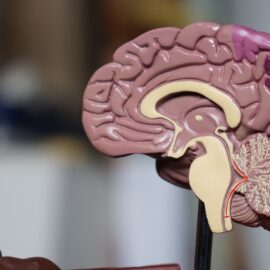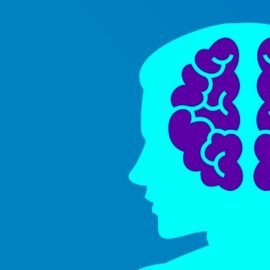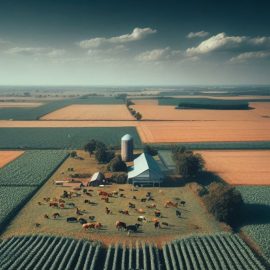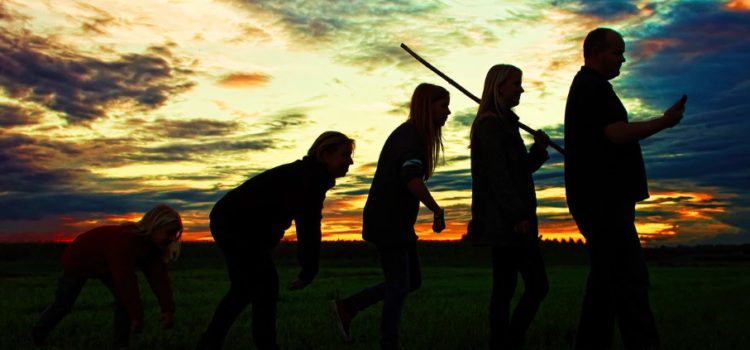
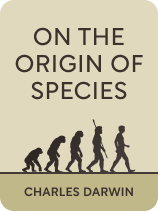
This article is an excerpt from the Shortform book guide to "On the Origin of Species" by Charles Darwin. Shortform has the world's best summaries and analyses of books you should be reading.
Like this article? Sign up for a free trial here.
Are all species related to each other way back? Do we have a common ancestor?
In On the Origin of Species, Charles Darwin argues that modern species are related through shared ancestry. He provides two pieces of evidence for this theory: the similarity of traits between related organisms and the breeding characteristics of hybrids.
Let’s take a look at the evidence for Charles Darwin’s “tree of life.”
Charles Darwin’s Tree of Life
Darwin’s theory of evolution maintains that all of our current species descended from older, less developed species. If organisms are shaped by the slow accumulation of adaptive traits passed on through reproduction, it follows that each organism has a history of evolving through different forms. Furthermore, the offspring of a particular species could evolve in different directions, into separate reproductive populations. This would indicate that modern species are in fact distant relatives of each other, descended from common ancestors.
(Shortform note: Darwin theorized that all life on Earth is descended from a single common ancestor—but some researchers have suggested the possibility that life on Earth could have had multiple origins. If simple life arose once, could it have happened two or three times on the same planet? However, research supports Darwin’s hypothesis of universal ancestry: All life on earth shares certain basic building blocks, including universal proteins and amino acids. Statistical analysis of the possible courses of evolution supports the view that these similarities likely originated in a universal common ancestor.)
Charles Darwin’s “tree of life” metaphor is based on his theory’s assertion that organisms are related to each other through a family tree of descent. This happens because one highly successful ancestor species is capable of seeding multiple descendant species.
The individuals in every species carry inherited traits from their ancestors (heritable variations). That means a single population may have multiple traits that are useful for particular purposes. These traits can accumulate in distinct groups within the species. Over enough time, the groups become distinct from each other, turning into two different species.
For example, a species of wolf has a variation that allows for one of two types of foot pads. One type of pad allows the wolves to move more silently, perfect for stalking small prey. The other type of pad helps the wolves run faster, making it easier to chase down large prey. Over time, these variations accumulated in two different groups that split off from each other, leading to two new species of wolves.
(Shortform note: Researchers have found that speciation—the process of one species seeding multiple new species—is largely influenced by population size and geography. One study of Anolis lizards on the Caribbean Islands found a consistent relationship between the size of an island and the number of different lizard species. Larger islands had more species because they could support larger populations and allowed lizards to spread across a greater area. As the lizards spread out, they had more opportunities to become isolated and form new independent species. Therefore, the number of distinct lizard species is proportionate to the area of the island.)
Darwin argues that all species today have ancient ancestors in common. He draws on two major types of evidence: similarity of traits and hybridization.
Evidence Type 1) Similarity of Traits Between Related Organisms
Darwin argues that shared traits between organisms reveal their relatedness. For example, all mammals have four limbs, warm blood, and three inner ear bones. These shared traits suggest that all mammals are descended from a common ancestor which had these traits.
Some of the most striking similarities between organisms reveal themselves through embryos (when the organism is in its earliest stages of prenatal development). For example, many land-dwelling vertebrates—including humans—develop gill slits and tails in the embryo stage. This trait not only suggests descent from fish but also suggests a common ancestry for all land vertebrates.
| The Role of Genes in Embryonic Similarities and Differences Biologists have ample evidence that embryonic similarity results from shared genes. The basic DNA instructions for how to make features like eyes, backbones, and legs may be the exact same genes across many organisms. But what then accounts for the differences in development between organisms? Researchers believe the differences in how organisms develop may have less to do with having completely different genes and more to do with the timing and duration of those genes’ activity during embryonic development. The instructions for producing a particular type of cell will be active or inactive for different durations depending on how many cells of that particular type an organism needs. That means an organism with large eyes may have the same instructions for growing eye cells as an organism with small eyes, but it develops bigger eyes by simply repeating those instructions more times. Researchers have even discovered molecular “counters” which accumulate or deplete proteins to trigger the next stage in embryonic development. |
Evidence Type 2) The Breeding Characteristics of Hybrids
The breeding characteristics of hybrids reveal relatedness between certain species. Darwin explains that breeders of plants and animals have found that individuals from similar species can sometimes reproduce with each other but with mixed results. Some hybrids only rarely produce offspring, some produce infertile offspring, while still others can sometimes produce fertile offspring and yield new hybrid varieties.
Darwin argues that the range of outcomes refutes the idea of sharp delineations between species. Organisms that can produce hybrid offspring together are distant relatives whose reproductive systems are gradually evolving to become incompatible with each other. This further supports the view that these organisms all had ancestors with a common reproductive system.
| What Causes Hybrid Incompatibility? Researchers have attempted to identify the exact source of reproductive incompatibility between hybrids to better pinpoint how and when species diverge. Research on fruit flies suggests a variety of factors. One experiment identified two genes that conflict with each other, resulting in the death of male offspring. When these genes are “turned off,” the male offspring survive. Other researchers have identified a divergence in gene function that dooms hybrid offspring: A gene will serve one purpose in one species and a second purpose in another. The offspring then struggle to survive because the same gene can’t perform two functions at once. Further research has identified an imbalance in proteins, rather than genes, that prevents successful reproduction. |

———End of Preview———
Like what you just read? Read the rest of the world's best book summary and analysis of Charles Darwin's "On the Origin of Species" at Shortform.
Here's what you'll find in our full On the Origin of Species summary:
- Charles Darwin's theory of evolution that changed how we look at life on Earth
- The objections raised against Darwin's theory and Darwin's rebuttals
- Updates on Darwin's theories from contemporary biology

